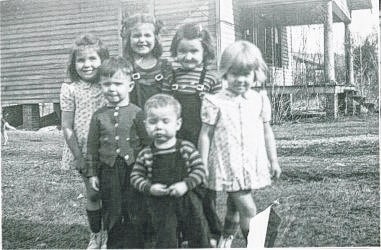
Who are you? What if you’re not what you thought?
The persons producing DNA Detectives, Swab Stories, First Peoples and other shows are on the hunt, hoping to get audience members interested in their origins via DNA testing and other information — gathering sources on -and off-line such as official documents and photographs.
Ancestry.com and 23andMe.com can give you a bit of information if you’re willing to pay the price, get your kit, complete the simple instructions, and wait for your results.
A few years ago at a cost of $500, I verified that my oldest sister and I had the same parents. Even though I wasn’t first in line to examine my ancestry further, as an AARP member I noted recently that I could get a $10 discount at Ancestry. Always a bargain hunter, I went for it.
I had always believed that my results would come back part Cherokee because my maternal grandmother, Viva Adams, had black hair, dark brown eyes, and a dark complexion. According to her family Bible, which I checked this past week while visiting my sister, she married Willie S. Adams on Nov. 20, 1910. Willie was fair and blonde and departed this earth at age 39 on Feb. 9, 1931, so I only know him from photographs.
Both my paternal grandparents were deceased before I was born, and I have no photographs of them.
I have always been told I was Irish, but in my four trips to Ireland, I never saw folks who looked like me or my sons. My trip to Holland was a different matter: I saw dozens of women who looked like me, and there were dead ringers for my two sons.
In terms of my siblings, I’ve always felt different. In the early years, I was the blonde among the four of us, and they all had dark hair. Our facial features were different as well. They had generous noses, me not so much, and straight teeth.
I had no baby book. By the time I came along, third birth in a little over three years, my mother was too busy with her fourth pregnancy and three little ones to be concerned with recording anything.
So what did my results from Ancestry indicate? 90 percent British Isles (Wales, Scotland, England). I’ve been to all three countries, and England is so diverse that it would be difficult to identify any trend. When I was in Scotland a few years ago, I wasn’t thinking about ancestry, and my trip to Wales was brief — just to say I’d been there.
The other 10 percent is a hodge-podge: 7 percent in other European countries, 2 percent in South Central Africa, and 1 percent in West Asia.
Tonight I begin teaching a four-part course, Multi-Media Autobiographical Writing Experience, for telecom workers from New York to Minnesota. A cursory examination of the class list tells me they are Anglo, African American, and Native American. My hope is that after 12 hours of exploration, including the production of a DVD, they will have the start of their autobiographies as they work to define themselves. I know I certainly wish my ancestors had engaged in such a project. And maybe you’ll consider doing so.
Their homework assignment this week is to collect a box of materials: photographs, notes, letters, emails, journals, diaries, report cards, birth certificates, awards, concert tickets, church bulletins, pressed flowers, brochures, licenses (marriage, divorce, hunting, drivers), drawings, school papers, etc.
And they should not be shy about asking questions of persons they know and recording responses.
Just this past week I was able to help a second cousin visiting from Texas, Mary McKinney Ray, clarify a document she had found on the web. It was about Willy Adams’ work for International Harvester in Benham, Kent. The document had an abbreviation that baffled her. I was able to tell her a story my mother had told me, and “Eureka!” The abbreviation made sense.
Willy had worked in the coal mines until his failing heart from his rheumatic fever as a child meant he could no longer do the heavy labor. He was assigned to monitor the Bath House. This coal mine did not send miners home after their shifts covered with coal dust: the company provided hot showers and storage facilities for a change of clothes.
As my telecom participants explore their autobiographies, I hope they will seek the truth of their lives as they have experienced them. And maybe they’ll decide that those truths can never be revealed or revealed only after their deaths.
Yes, we all will die, and the tragedies we’ve been experiencing ever more frequently let us all know that we need to live our lives with honor, with courage, and with, as one of my former students told me last night on Facebook, with HOPE: “We need one another and when we reflect on struggles throughout time, we know they are not resolved in months or years or even in a lifetime, but we contribute through our best nature as much as we can.”



